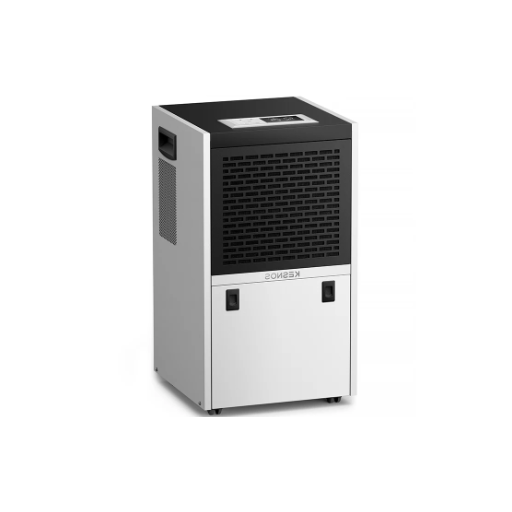Basements often face unique challenges when it comes to maintaining optimal air quality and humidity levels. Excess moisture in these spaces can lead to serious issues such as mold growth, structural damage, and an uncomfortable indoor environment. For businesses or homeowners managing large basement areas, investing in a commercial dehumidifier is a highly effective solution. This article explores the critical role of commercial dehumidifiers in addressing moisture control, highlights their key features, and offers guidance on selecting the right unit for your specific needs. By the end, you’ll learn how these powerful devices can transform your basement into a cleaner, healthier, and more functional space.
Understanding Dehumidifiers
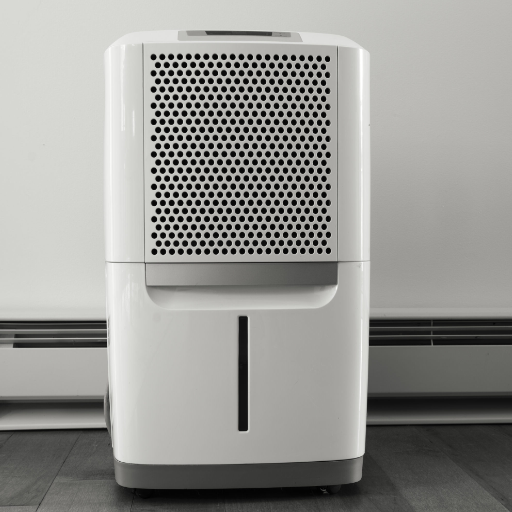
What is a Commercial Dehumidifier?
Commercial dehumidifier units are heavy-duty equipment to remove excess moisture in large areas, such as basements, warehouses, and industrial settings. In contrast to residential dehumidifiers, the commercial ones are designed to cope with higher levels of humidity and operate in large areas. They maintain relative humidity at an optimum level where mold growth is prevented, structural damages are hindered, and foul smells emanating from humidity are curtailed.
Commercial dehumidifiers draw in humid air, cool it to condense water vapor, and eject dry air back into the atmosphere as their key function. Most commercial dehumidifiers are fitted with rugged components such as larger compressors, increased airflow capacities, and filtering systems designed to make them viable for continuous use in onerous situations, thus enabling consistent performance over long periods. Many models also provide various other features such as digital humidity controls, automatic drainage options, and wheels or handles, making them portable.
Commercial dehumidifiers protect the safety and health of a moisture-affected place. Their proper functioning safeguards infrastructure from damage, improves air quality, and assists in preventing adverse health effects arising from mold and mildew-induced exposures. Areas with critical operational needs for humidity control, such as storage or production plants, thus become most especially reliant on these services, further solidifying the need for such equipment in both residential and industrial settings.
How Dehumidifiers Work in Basements
Dehumidifiers in a basement are meant to draw in additional moisture from the air, thereby maintaining stable air humidity suitable for human life. In brief, the process usually involves drawing in damp air into the chamber through an intake vent, cooling it to condense moisture particles, and collecting water in a reservoir or draining it to the outside through a hose. Dry air is then reheated and released back into the room. The cycle goes on until the desired humidity level is reached.
Basements are particularly prone to humid conditions because of poor ventilation, lower temperatures, and, of course, exposure to moisture being below grade and hence liable to seep in through walls, floors, or cracks. The dehumidifiers fight this by keeping humidity levels below 50%, which halts the growth of mold and mildew. They also help in preserving items stored in the basement, such as furniture, papers, and electronics, all of which could suffer and degrade if in too damp an environment.
Ensuring that the dehumidifier is suitable for the size of the basement and the moisture levels will ensure optimum performance. Higher capacity units are recommended for bigger or more humid spaces. The dehumidifier would then benefit from regular maintenance, such as cleaning the air filter and emptying the water collection tank every few days, to continue working well over time.
Importance of Humidity Control in Crawl Spaces
Maintaining proper humidity levels in crawl spaces is necessary to preserve the structural integrity of a building and create a healthy indoor environment. High humidity in crawl spaces allows the proliferation of mold, wood rot, and pests, all of which undermine the structural stability of foundational materials and degrade air quality inside the house. According to building science experts, moisture from an uncontrolled crawl space can move upward and raise humidity levels in the living areas of a house.
Also, when excessive humidity prevails in the crawl space, there will be adverse effects on energy efficiency. The moist air requires more energy for cooling; hence, it increases the energy consumption of the HVAC systems. By keeping humidity under control through processes such as vent sealing, vapor barrier installation, and the operation of a crawl space dehumidifier, energy saving can be realized on top of having lower repair costs related to dampness.
Proper crawl space moisture control extends to protect HVAC systems and plumbing in these areas. High humidity causes the corrosion of metal components like ductwork or piping, resulting in leaks and repairs. Keeping these systems at optimal humidity, around a range of 30%-50%, extends the life of these systems and safeguards the homeowner’s investment. Crawl space humidity control thus becomes one of the very basic requirements of a safe, efficient, and long-lasting home.
Types of Dehumidifiers for Basements
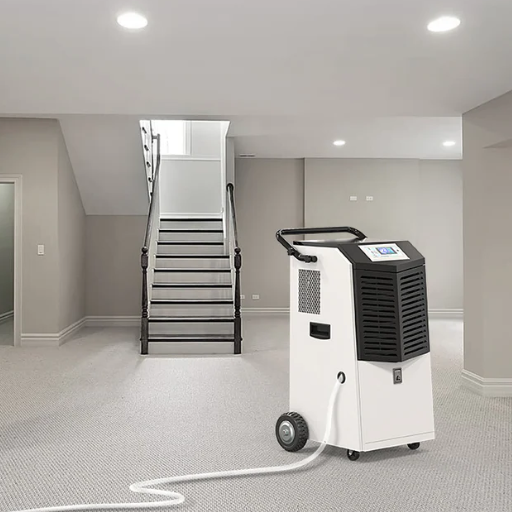
Crawl Space Dehumidifiers
The crawl space dehumidifiers are engineered to fit and work efficiently in compact, low-clearance areas. They control humidity levels by extracting moisture from the air and preventing mold growth, wood rot, and other humidity-related issues. Modern crawl space dehumidifiers come equipped with features such as built-in hygrometers for humidity monitoring, automatic pump-out systems, and energy-efficient compressors for running costs.
Efficient crawl space dehumidifiers should be selected according to pint-per-day (PPD) capacity, energy efficiency ratings (i.e., Energy Star certification), and the size of the crawl space for which they are intended. Those with a capacity from 70 to 100 PPD typically serve medium to large crawl spaces, with the extra protection of filter systems, dust, and allergens. In addition, via smart connectivity, users can check and adjust the humidity in their crawl spaces through mobile apps, making the system more responsive to user needs and longer-lasting.
By purchasing a high-performance dehumidifier with performance specifications suited for crawl space parameters, a homeowner can reduce moisture-related problems and ensure corresponding structural integrity and indoor air quality.
Industrial Dehumidifiers for Large Spaces
Industrial dehumidifiers have been developed to cater to moisture problems of the scale found in large open spaces such as warehouses, manufacturing facilities, and large commercial complexes. These units are generally engineered for robust utility, capable of extracting enormous moisture loads within 1 day, sometimes more than 200 pints, depending on the model. Industrial units with advanced features, such as high-efficiency compressors, multiple air filtration stages, and corrosion-resistant coils, ensure durability to stand severe operational conditions.
Choosing the right industrial dehumidifier depends upon several parameters such as room square footage, existing humidity levels, and the specific environmental requirements of the facility. Most contemporary models feature digital control and automated sensors to regulate humidity levels accurately. Some of these units also come fitted with green technologies such as variable speed fans and eco-friendly refrigerants that minimize electricity consumption without compromising on performance.
Keeping these units in a comprehensive moisture control strategy can prevent high humidity from damaging sensitive equipment, inventory, and infrastructure through corrosion, mold formation, or product deterioration. Controlled humidity in such large-scale activities adds to maintaining good working conditions, complying with industry standards, and the efficiency of industrial processes.
Commercial Dehumidifiers with Pumps
Commercial dehumidifiers with pumps are designed to render high-efficiency moisture control in demanding environments. Each unit is equipped with a built-in pump capable of continuous drainage, that is, no one’s supposed to operate it elsewhere. This feature makes it very suitable in situations where moisture removal on a continuing basis becomes a key factor in the operations of a very large scale. The pump mechanism offers a vertical lift or long discharge for the condensate water, allowing installations to be well designed for operational efficiency.
Modern commercial dehumidifiers with pumps feature high technology such as digital humidistats for precise monitoring and control of humidity, and an automatic restart function to continue operation after a power outage. In addition, energy-efficient units meet sustainability guidelines, thereby supporting considerable savings in operating costs over time.
All kinds of industries maintain these systems, such as warehousing, manufacturing, and data centers, in which controlling humidity levels is an absolute prerequisite for the protection of their goods, infrastructure, and equipment. For instance, in a data center, excess moisture becomes hazardous as condensation could now form over circuitries, resulting in malfunctions or corrosion. Similarly, during heavy scales of food storage, dehumidifiers act as a deterrent to spoilage by maintaining proper temperature. Investing in commercial dehumidifiers with pumps embodies not just operational but also regulatory requirements that ensure dependable performance and environmental control in the critical application.
Features of a Good Dehumidifier
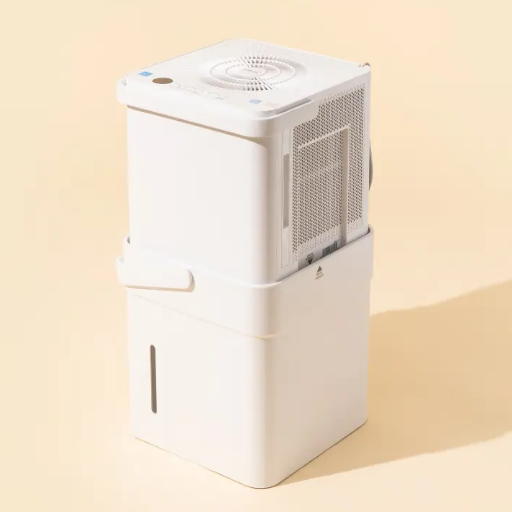
Dehumidifier with Pump and Drain Options
In regard to dehumidifiers for commercial or residential use, the selection of one should be such that it is equipped with a pump and various drainage alternatives, which is ideal for moisture control. The integrated pump-assisted dehumidifier can be split into removing moisture from the atmosphere by transferring water automatically through the pump into an outside drain, a sink, or even going up to an outlet just nearby. This feature is very advantageous in places that require the dehumidifier to run in a continuous mode, such as in basements, industrial settings, or a data center, since the operator will never be interrupted by the emptying of water in the reservoir.
Nonetheless, units that allow for both gravity drains and pump-assisted drainage present various options for a diverse array of applications. Gravity draining depends on placing the dehumidifier near the outlet mounted on the floor, allowing natural water flow. The advantage of a pump function becomes apparent when water has to be drained upwards or horizontally for long distances. Accordingly, the dual drainage system ensures that a dehumidifier fits variable layouts and operational constraints with the best performance of the dehumidifier.
For me, a dehumidifier with such features is a must-have for any application that demands fine control of humidity levels. From my experience, having such equipment fitted with a reliable pump and drainage system makes for smooth day-to-day operations, thus reducing interruptions caused by overflows or maintenance; all these features combine to render the whole dehumidification process more user-friendly and efficient.
Filter Systems in Dehumidifiers
Filter systems in dehumidifiers give a great deal in improving air quality, operational efficiency of machines, and even their lifespan. Such systems are typically designed to trap a whole gamut of particles from the air, such as dust, pollen, mold spores, and other allergens, to keep the air that is circulated clean and safe to breathe. Modern dehumidifiers employ a variety of filters, including washable filters, HEPA filters (High-Efficiency Particulate Air), and activated carbon filters-subjected to their particular usages. Washable filters are inexpensive and easy to maintain, whereas HEPA filters are extremely good, especially when the smallest particles need to be removed. Activated carbon filters are used to get rid of the smell and VOCs (Volatile Organic Compounds), thus covering every possible angle in air purification.
In choosing a dehumidifier, one must consider how efficient the filter system is and whether it meets the desired environment’s needs. For instance, some dehumidifiers used in industrial settings or larger spaces typically come with more complex multi-stage filtration systems designed to provide additional protection against fine particulate matter and harmful pathogens. These advanced configurations might consist of several stages: pre-filters for large particulates, secondary HEPA filters for fine dust, and optional UV or carbon filters for pathogen removal and odor elimination. Such highly tailored solutions prove invaluable for locales where air quality control has no room for error: laboratories, hospitals, and manufacturing plants are some of them.
It is vital to keep the filter system in good condition for a dehumidifier to work at its best. A blocked or poorly maintained filter reduces the airflow inside the device, reduces its efficiency, and, sometimes, when inefficient conditions worsen, causes an overworking of the motor. In general, manufacturers advise that their filters be checked by the user and cleaned or replaced every month or every three months, depending on the filter type and the operating condition. While new technology ensures ease of use with filter-cleaning alerts, maintaining regular maintenance for the filters is usually redundant; thus, the device would have less downtime and longer life. The smart user will, for sure, prefer a dehumidifier with an advanced and efficient liquor-based filtration system to enjoy both good performance and good air quality.
Hose Connections for Efficient Drainage
The integration of a hose connection into a dehumidifier is an important aspect for ensuring drainage efficiency and continuity. Continuous drainage systems significantly reduce manual emptying of water tanks by homeowners and facility managers. Such systems come in handy in high-humidity conditions where water collection tanks fill very fast. When set up correctly, a hose connection lets the condensed water flow straight into a drain, sump pump, or external container for increased convenience and operational efficiency. High-quality hoses, made from materials such as reinforced PVC or flexible rubber, assure long-term reliability, wear and tear in all kinds of weather.
Advanced methods of hose connection are available in modern dehumidifiers, where both gravity and pump drainage systems are supported. Gravity systems work mostly with natural downhill water flow and are thus best suited for installations where dehumidifiers are above their drainage points. On the other hand, a pump system will have pumps inside to get water flowing through the hose over long distances or up to an elevated drain. The manufacturers now offer products designed with an emphasis on user-friendly connection points, often employing threaded or quick-connect fittings that ensure leak-proof, secure seals. When choosing a dehumidifier, it is therefore essential to consider the type of hose connection that best supports the layout and needs of your space.
Moreover, continuous maintenance and upkeep of a hose and drainage system are important to avoid clogging, leakage, and even mold buildup. Periodic cleaning of the hose with warm water and mild detergent minimizes debris and biofilm accumulation. Furthermore, continued inspection of connections for any cracks or deterioration guarantees the best functioning. A hose connection in combination with tough tubes and an excellent drainage scheme is an essential feature that greatly increases the working efficiency and permanence of any dehumidification system. This eliminates irregularities in maintaining humidity control and provides the surroundings with a safe, dry, and moisture-free environment.
Choosing the Right Dehumidifier
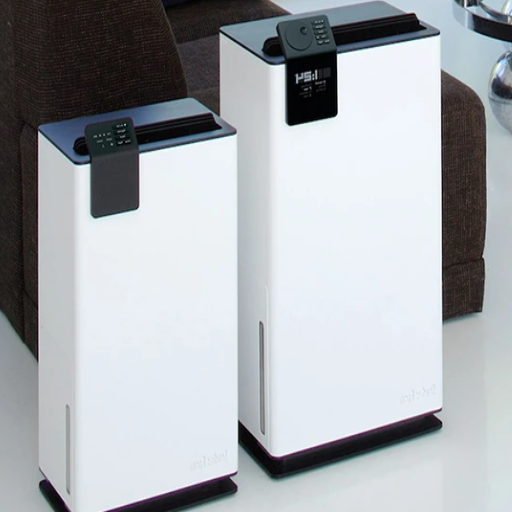
Factors to Consider for Your Basement
When purchasing the best dehumidifier for your basement, many technical-relevant considerations must be weighed for optimal output and durability. Some of these key points are listed below:
- Basement Square Footage and Coverage Capacity: Measuring properly the square footage of your basement is an important step so that the dehumidifier of requisite capacity can be chosen. Dehumidifiers are rated by their moisture removal ability (given in pints per day), depending on a room’s square footage. For example, smaller basements with low humidity, measuring approximately 500–800 sq ft, can be handled by low-capacity units having a capacity of 20 to 30 pints per day, whereas larger or severely damp basements can require 50+ pint models.
- Humidity Level and Extraction Requirements: A high-priority consideration in deciding the type of dehumidifier required is the existing indoor humidity level. Most basements report relative humidity above the 30% to 50% ideal range. Select models that allow for either integrated hygrometers or adjustable humidity settings to operate in a precision-based fashion within that range.
- Operating Temperature and Defrost: Basements are often chilly environments, especially during the winter months. Choose one able to operate at low temperatures (preferably down to 41°F) and equipped with an auto-defrost feature to keep frost from forming on the coils, which degrades system efficiency.
- Drainage Options and Convenience: Manual emptying of water tanks is a pain in climates with high moisture. Dehumidifiers with continuous drainage featuring a built-in pump or gravity-fed hose connection keep manual operations to a minimum, allowing for continuous operation.
- Energy Efficiency and Certification: Energy Star-certified dehumidifiers consume way less energy than ordinary ones, allowing for savings in long-term energy consumption. An energy-efficient dehumidifier reduces your utility bills and supports green operations.
- Noise Levels and Placement: Think about the noise production of your dehumidifier, especially if you are going to use the basement as a living area. Noise suppression technologies include the use of insulated compressor housing or low dB motors to keep it quiet.
Thorough consideration of these variables, therefore, enhances the ability to make an informed purchase that fits the environmental conditions and needs of your basement. A combination of these considerations and technical specifications would ensure adequate humidity control and long-term performance.
Capacity and Size of the Dehumidifier
Capacity is the ability of the dehumidifier to rid the surrounding air of excess moisture, and it is commonly denoted in terms of pints or liters per day. Deciding upon capacity again should revolve around the square footage of the space and the degree of humidity. To illustrate: in a mildly damp basement measuring roughly 500 square feet, the capacity of the unit would approximately be 20 to 25 pints per day, whereas a seriously damp one would require a bigger capacity unit of maybe 30 to 40 pints per day.
Efficiency and performance are most greatly affected by size. For example, higher volume units are preferable for large rooms having huge humidity levels; such machines undergo testing for maximum working pressures, so as not to put pressure on the assembly members during intense work. Conversely, smaller spaces or spaces with lower humidity levels may achieve sufficient dehumidification performance with smaller units engineered for a confined working environment.
Modern units will also present the choice of variable speed fans and setting target humidity levels for even more fine-tuning of operation; this is useful when putting the unit to work in the variable environment of your basement. Altogether, this information will help to ensure the best results, balanced with the least amount of energy expenditure in the long run.
Cost vs. Efficiency in Industrial Models
Cost versus operational utility should be balanced when optimizing an industrial dehumidifier’s long-term performance. Industrial types are mainly for handling large volumes of air so that environments such as warehouses, factories, or construction sites can be well serviced. Due to their high capacity, the costs attached to the initial stage are high. These costs may be compensated for by efficiency gains if the equipment is well-operated for a long period.
For example, energy-efficient industrial dehumidifiers use advanced compressor technology for restricting energy wastage, a low-resistance airflow path for the maximization of removal rates for moisture per kilowatt-hour, and intelligent control systems. Data from recent studies indicate that the advanced industrial desiccant and refrigerant dehumidifiers realize energy savings of up to 20% compared with their older versions. Additionally, features such as energy recovery systems integrated into the units, variable speed drive motors, and automated defrost cycles all contribute to minimizing operational costs in the course of the unit’s life.
Less expensive models may have an apparent cost advantage; however, they engender higher energy costs, problems associated with maintenance, and early obsolescence. On the other hand, making an investment in a high-efficiency unit may often present a lower total cost of ownership (TCO). Hence, load demands, actual facility sizes, and long-term energy profiles are carefully evaluated by decision-makers to ensure that their financial investment is in accordance with the operational goals and sustainability objectives.
Installation and Maintenance Tips
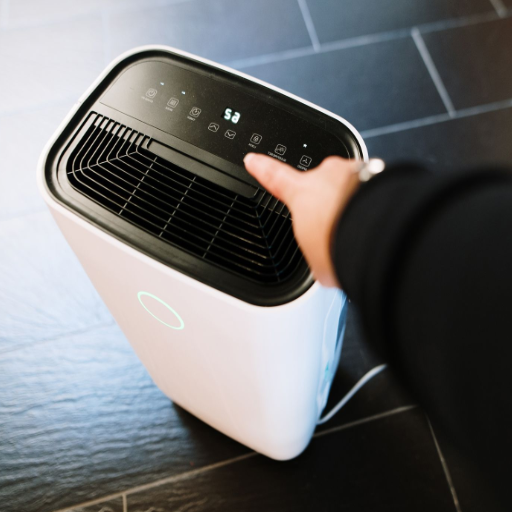
Proper Installation of Commercial Dehumidifiers
To ensure the best efficiency and maintain durability, commercial-grade dehumidifiers require approved installation. Start by choosing a location that doesn’t stand in the way of air flow and keeps the unit away from possible contaminants such as dust or corrosive chemicals. The units should be placed on a sturdy and levelled platform to prevent units from vibrating and to support evenly distributed operational loads. Maintaining a space with sufficient clearance around the dehumidifier (usually 12 to 24 inches on all sides) would also be good for air circulation and for ease of servicing.
All electrical connections must comply with the local building code, regulations, and standards. It is highly recommended that dedicated circuits be installed to prevent overloading of any existing electrical system. The other concern is proper drainage, since draining moisture extracted from the air is said to be through gravity drains or a condensate pump; insulation of drainage lines will prevent condensation problems in cooler environments.
When combining the system with greater HVAC configurations, check for compatibility in order to ensure the ability of the air handler matches existing ductwork. Associated sensors and controls must be calibrated according to the manufacturer’s instructions to maintain target humidity. In the end, a full test should be carried out to assess the installation’s performance and to check if any unusual noise or abnormal vibration occurs and if any loose connections exist. Following such a painstakingly detailed process will endear you to greatly reduce all possibilities of premature failure and sustained reliability within commercial use.
Regular Maintenance for Optimal Performance
A structured maintenance procedure will greatly contribute to the optimal performance and prolonged lifetime of the systems. During inspections, all mechanical and electrical components shall be viewed to detect any possible wear or irregularity. Filters should be replaced at intervals indicated by the manufacturer so that air is filtered correctly and that undue strain is not put on system components. It is also appropriate to check periodically for calibration of sensors and control systems so that any drift beyond operational limits is avoided.
Lubricating moving parts such as bearings and motors reduces unnecessary friction, which may cause overheating that would result in failure of the system. Maintenance workers should clean the condenser and evaporator coils to improve heat transfer efficiency and lower their energy consumption. System performance data-recording of pressure levels, temperature differentials, etc.-bears early warnings of any anomaly requiring immediate corrective actions.
By further applying predictive maintenance technologies such as vibration analysis and thermal imaging, there is a very great possibility of increased system reliability due to early warning signals of a developing problem. An accurate record of all maintenance activities is brought into compliance with standards in the industry and allows trend analysis for predicting probable failures. Following these maintenance procedures helps systems in all aspects, including ultimate performance, high efficiency, and very low downtime, whether residential or commercial.
Signs Your Dehumidifier Needs Attention
The dehumidifier is an essential appliance that maintains optimum indoor air quality, but just like any other mechanical system, it might show signs of wear or ask for service. To make sure that it continues to work efficiently, the following indications must be monitored:
- Lower Efficiency of Moisture Removal: If moisture removal by the dehumidifier is inefficient, either the filters might be clogged, the compressor might not be working correctly, or it could be a low refrigerant issue.
- Unusual Noises: Persistent rattling or buzzing, or even gurgling sounds, are sometimes a clue to loose parts, worn-out fans, or motor damage.
- Water Leakage: Water shows visible pooling around the unit because of cracked hoses, misaligned or broken drain connections, or a full or malfunctioning internal reservoir.
- Frost Formation: Frost and ice on the coils of refrigerating-type units may indicate a bad defrost sensor, low refrigerant, or use in an environment that is too cold for the design of the unit.
- Persistent Musty Odor: A musty or sour odor when the unit is in use usually indicates some humongous microbial growth within the system, such as mold on the filters, the coils, or almost any surface inside.
- Error Codes or Indicator Lights: Modern dehumidifiers have system indicators and error codes for various possible malfunctions. Constantly flashing lights or certain error codes should be looked up in the user manual and followed with diagnosis or repair by a professional technician.
Addressing these signs in time, followed by proper maintenance, will keep the dehumidifier at its optimal performance for as long as possible. The assistance of a skilled technician should be sought in case of a major problem or an unresolved issue.
Reference
- Coupling Active Heat Exchange and Vacuum Membrane-Based Air Dehumidification for High-Efficiency Air Conditioning – Purdue University.
- Eliminating Humidity and Condensation Problems in University Dormitories – Case Study – Texas A&M University.
- Residential Performance Code Methodology for Crediting Dehumidification and Smart Vent Applications – Final Report – University of Central Florida.
- Impact of Residential Mechanical Ventilation on Energy Cost and Humidity Control – University of Central Florida.
- Heating, Ventilation, and Air Conditioning for a Superinsulated Solar House – University of Illinois.
Frequently Asked Questions (FAQ)
Q: What is a commercial dehumidifier for a basement?
A: A commercial dehumidifier for a basement is a powerful appliance designed to remove excess humidity from large spaces, such as basements, workshops, and commercial properties. It operates efficiently to improve the indoor air quality and prevent issues like mold and water damage.
Q: How does a commercial dehumidifier for a basement help with high humidity levels?
A: A commercial dehumidifier for a basement can help reduce high humidity levels by extracting pints of moisture per day. This not only protects your property from costly repairs but also creates a more comfortable environment for customers and occupants.
Q: What features should I look for in a commercial dehumidifier for a basement?
A: When selecting a commercial dehumidifier for a basement, look for features like a pump and drain hose for continuous drainage, an automatic defrost function to prevent freezing, and a durable design that can withstand harsh conditions.
Q: How many pints of moisture per day can a commercial dehumidifier handle?
A: Depending on the model, a commercial dehumidifier for a basement can handle between 50 to 70 pints of moisture per day, making it an effective solution for spaces prone to excess humidity.
Q: Can a commercial dehumidifier prevent rust and water damage in my basement?
A: Yes, a commercial dehumidifier for a basement can effectively prevent rust and water damage by controlling humidity levels, which helps to avoid the conditions that lead to these issues.
Q: Are commercial dehumidifiers noisy when in operation?
A: While some commercial dehumidifiers can produce noise, many modern models are designed to operate quietly. It’s advisable to check customer reviews and product specifications for noise levels before purchasing.
Q: Is it cost-effective to use a commercial dehumidifier for a basement?
A: Yes, investing in a commercial dehumidifier for the basement can be cost-effective in the long run. By preventing water damage and costly repairs, it pays for itself while improving the overall air quality of your space.
Q: Can a dehumidifier for your space be used in conjunction with a pump and drain hose?
A: Absolutely! Using a dehumidifier for your space in conjunction with a pump and drain hose allows for continuous and efficient moisture drainage, eliminating the need to manually empty the tank.
Q: What type of maintenance does a commercial dehumidifier require?
A: Regular maintenance for a commercial dehumidifier for a basement includes cleaning or replacing filters, checking the pump and drain hose for blockages, and ensuring the unit is free from dust and debris to maintain optimal performance.

